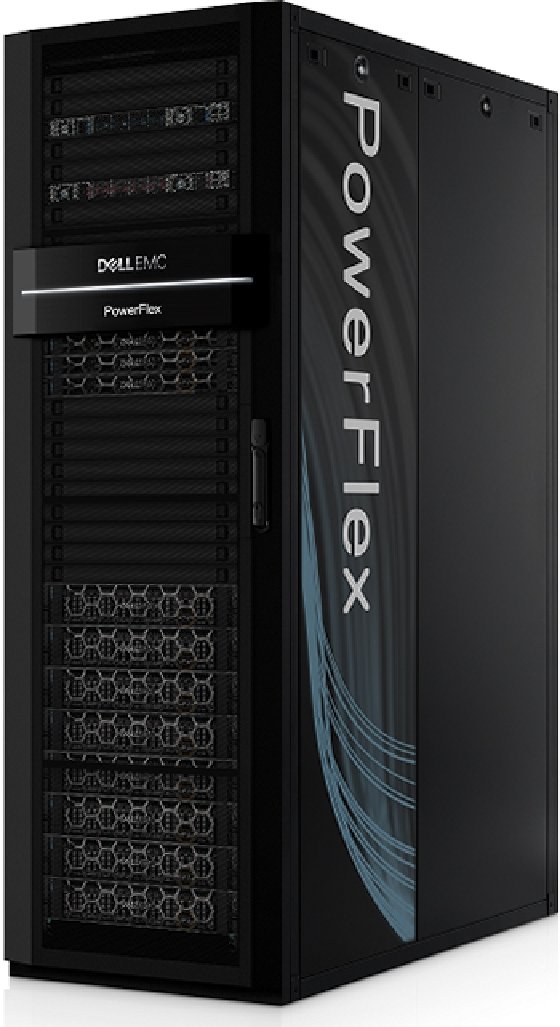PowerFlex (formerly ScaleIO)
What is PowerFlex (formally ScaleIO)?
PowerFlex is a software-defined storage product from Dell EMC. It is available as software only or as a prebuilt Dell server or rack appliance. PowerFlex is designed for high-performance storage for enterprise data center, development, virtualization and physical server environments. It was previously known as ScaleIO and VxFlex.
PowerFlex is a proprietary storage area network (SAN) offering. It takes the local storage of the constituent servers and makes them available over a network. The resulting storage pool is larger, faster and more resilient than if a client were to use their own local storage. It can make the storage available as either block storage or file storage. It competes with open SAN standards such as iSCSI, or Internet Small Computer System Interface.
What are PowerFlex's components?
PowerFlex has two main components: Storage Data Server (SDS) and Storage Data Client. The SDC is installed on systems that contribute their local direct-attached storage resources to pooled storage. The SDC is installed on systems that use data on the storage pools.

The SDS component can be installed on a variety of systems. Dell offers preconfigured servers ranging in size from single 1U (1.75 inches) rack units to entire server racks. In addition, it can be installed on any commodity server hardware used by the customer. It is also available for cloud deployment on several vendors, including AWS and Azure.
The SDC is available for most popular workloads to make the storage pool usable. Native clients are available for popular operating systems such as Linux and Windows Server as well as for virtualization hosts such as ESXi and Citrix Hypervisor. Additionally, in recent PowerFlex versions, some standard protocols are available without using the SDC, including NFS, or Network File System; SMB, or server message block; and NVMe over TCP, or nonvolatile memory express over TCP.
The separation of the server and client component allows for flexibility in deployment. A two-layer, or independent, deployment separates the storage servers from the application servers. Both the SDS and the SDC can be utilized on the same server in a hyperconverged infrastructure (HCI) approach. A mixed approach can also be used with some independent servers and some HCI all using the same pool of storage.
What are PowerFlex features?
PowerFlex has two native allocation unit sizes. Medium granularity uses 1 megabyte allocation units and has higher performance and responsiveness. Fine granularity uses 4 kilobyte allocation units as well as offers inline compression and better space utilization, especially when using large numbers of snapshots.
PowerFlex supports modern distributed storage technologies:
- Snapshots. Supports scheduled and on demand storage snapshots. Snapshots can be designated as read/write or read only.
- Replication. Data sets can be replicated. Replication can be on demand or scheduled. Replication is asynchronous.
- Fault tolerance. Data is automatically distributed among participating servers for fault tolerance purposes. Faults and array rebuilds can happen automatically without performance impact.
- Compression. In-line compression is available with fine granularity systems.
PowerFlex Manager allows for single point of management of a pool from a web interface.
PowerFlex supports extremely large storage pools. A single volume can be as large as 1 petabyte with a 16 PB limit of raw capacity. Standard systems can have up to 512 SDS and 2048 SDC.
History of PowerFlex
The company ScaleIO was founded in 2011 in Israel by Boaz Palgi, Erez Webman, Lior Bahat, Erin Borovik and Erez Ungar. EMC Corporation purchased the company for $200,000,000 in 2013; EMC itself was subsequently acquired by Dell in 2016. In 2018 ScaleIO was rebranded as VxFlex. In 2020 it was again rebranded as PowerFlex.
Looking at high-end block storage systems for high transactional needs, a Canadian wholesale bank decided to implement Dell PowerMax as an investment for current and future business. See why TD Securities chose Dell PowerMax.







